"The Nutcracker Suite" - another Christmas tradition
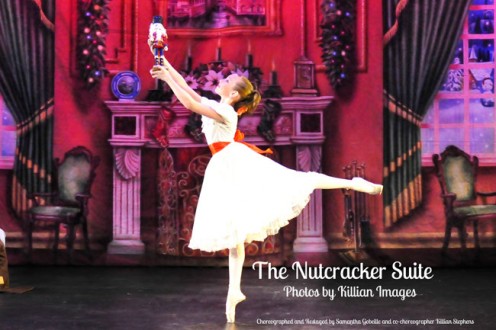
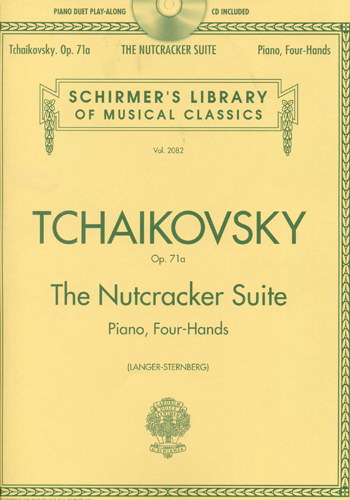
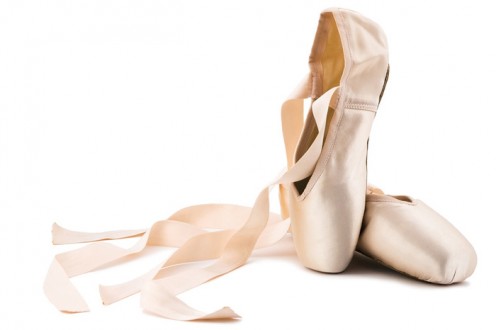
A Christmas tradition
One of the most elegant and exquisite Christmas tradition I can think of is seeing a performance of the ballet, The Nutcracker Suite. What a wonderful joy it is to spend an afternoon or evening viewing this quintessential ballet and listening to the beautiful music.
My Christmas is not complete without seeing The Nutcracker Suite and listening to the lovely classical music of Russian Peter Tchaikovsy who wrote the score. As a child, I took ballet dance lessons and every little girl wanted to dance the part of the Sugar Plum Fairy and no one more than me.
I played the piano in my youth, and of course studied Tchaikovsy's music. No one more than me loved playing the music of "The Sugar Plum Fairy" and "The Waltz of the Flowers,"my two favorite dances and music from the ballet.
For me, during Christmas time, the epitome of Christmas, was seeing a performance of The Nutcracker Suite. I dreamed and fantasized of being Clara, the beautiful girl who gets her prince when the Nutcracker present she receives comes alive. Her Nutcracker prince takes Clara on a magical, mystical tour of his realm, the Land of the Sweets.
It is every girl's dream to see The Nutcracker Suite, so if you have a daughter or granddaughter, see The Nutcracker this Christmas holiday season! Oh, and boys may like this ballet too, as Clara has a younger brother named Fritz.
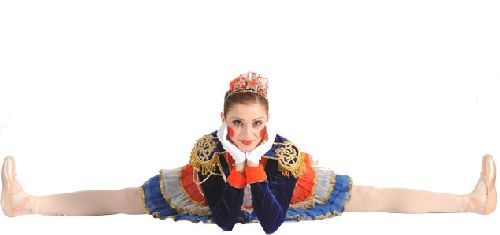
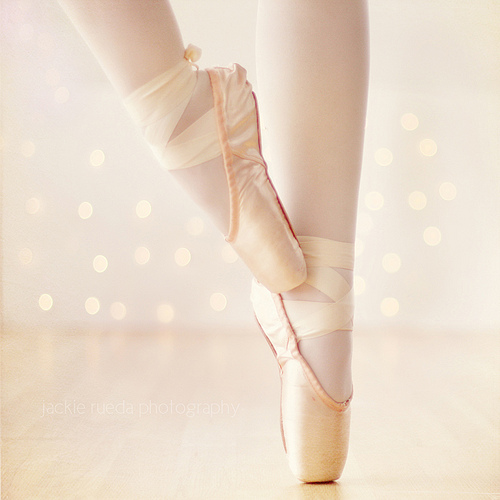
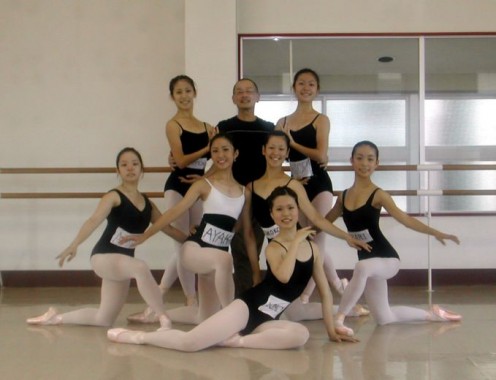
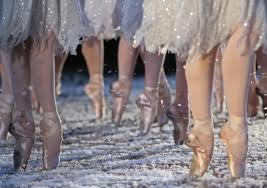
A brief history of ballet
Ballet is a formalized form of dance that takes hours upon hours of practice to perfect and hours upon hours of exercise to remain flexible. Although, the word 'ballet' is French and today uses French words and vocabulary to describe the steps and positions, ballet actually has its origins in the Italian Renaissance courts of the 15th and 16th centuries.
The word ballet, or course, comes from French and it was borrowed into the English language in the 17th century. The word ballet originally comes from Italian, balleto, which is the diminutive of the Italian word ballo, dance, which comes from the Italian verb ballare which means 'to dance.' So that is how we ended up using the French word 'ballet.'
From Renaissance Italy, ballet quickly spread to the French court of Catherine de'Medici, originallly, from Florence, Italy, and from here the dance developed even further.
By the late 17th century, Louis XIV had founded the famed Academie Royal de Musique (the Paris Opera), which merged with the first professional theatrical ballet company, The Paris Opera Ballet. Because of this, we have the reason for the predominance of French in the vocabulary of ballet.
This French theatrical ballet troupe eventually became separate and an independent form of art in France, but it always maintained a close association with opera.
From France, ballet spread from the heart of Europe to other world-wide places and nations.
- 1740's The Royal Danish Ballet and Imperial Ballet of the Russian Empire was founded.
- 1907 the Russian ballet left Russia for Paris, France and the Ballet Russes of Serge Diaghilev became influencial and ballet continued to spread further as more modern companies were formed.
- 1931 London's, The Royal Ballet was formed.
- 1933 the San Francisco Ballet began.
- 1937 the American Ballet Theatre was formed.
- 1940 The Australian Ballet was formed.
- 1948 the famed New York City Ballet began.
- 1951 the National Ballet of Canada was formed.
- 2002 the Delhi Ballet began.
These ballet companies have all performed some type of The Nutcracker Suite during Christmas seasons.
20th century styles of ballet continued to develop and strongly influenced broader concert dance. For example, Martha Graham's New York dance troupe incorporated much ballet in her modern dance performances.
George Balanchine, one of the U.S. great ballet dancers and choreographers, developed what is known today as neoclassical ballet.
From here the subsequent development was contemporary ballet and post-structural ballet. A good example of this is Germany's William Forsythe and his choreography of modern ballet.
Mikhail Baryshnikov, a Russian ballet dancer who defected to the U.S. back in the 1970's, has danced and choreographed for the American Ballet Theatre.

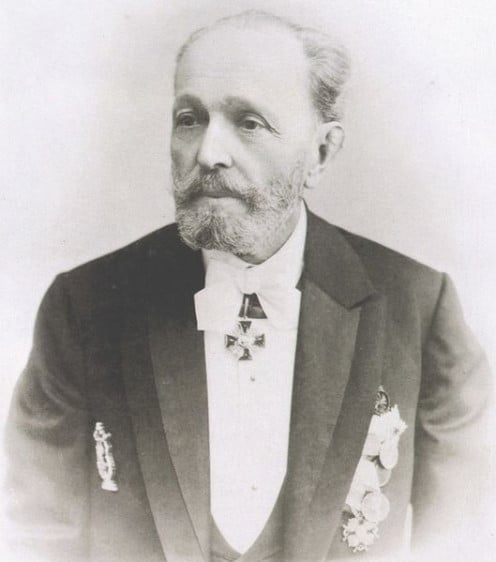
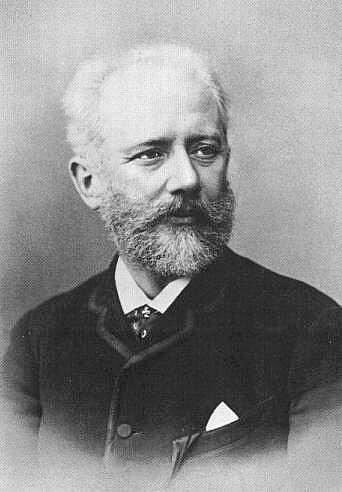
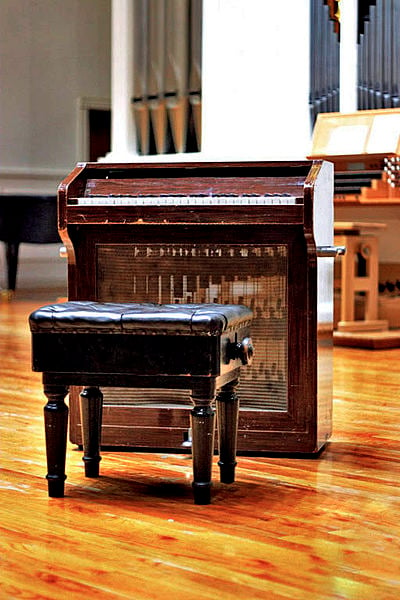
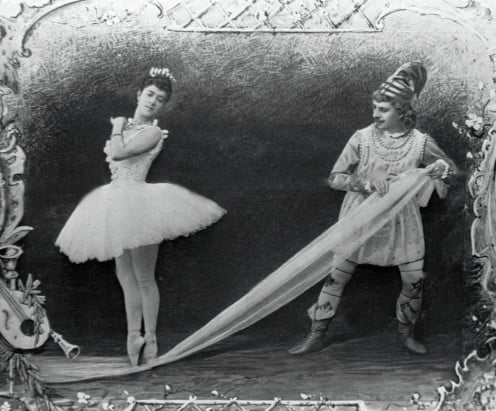
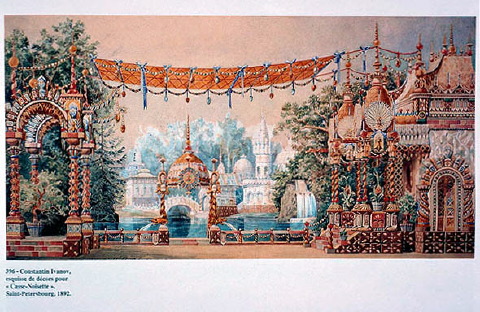
The creators of "The Nutcracker Suite"
The Nutcracker Suite is a two-act ballet choreographed by Marius Petipa and Lev Ivanov with musical score by Pyotr Ilyich Tchaikovsky (op.71)
Petipa was already famous at the time for having choreographed the ballets of Don Quixote, Giselle, Coppelia and Sleeping Beauty among others; all beautiful ballets to see if you have not done so already.
Tchaikovsky was already famous for writing the musical scores for the ballets, Swan Lake and Sleeping Beauty. In fact, Petipa and Tchaikovsky had just worked together on Sleeping Beauty right before collaborating on Nutcracker.
The libretto, which means musical text, was adapted from E.T.A. Hoffman's story, The Nutcracker and the Mouse King. The story is set in Germany which is the homeland of our Christmas tradition and so it is so fitting that The Nutcracker has become a Christmas tradition, especially here in the U.S.
The plot of the Nutcracker was simplified for the two-act ballet and does not scene for scene follow Hoffman's story. But, the gist of the story comes from here. Hoffman's tale contained a long flashback story entitled, "The Tale of the Hard Nut," in which it is explained how the prince was turned into a Nutcracker. This part was left out of the ballet.
The Nutcracker premiered only in part at the Mariinsky Theatre in St. Petersburg in December 1892, on a double-bill with Tchaikovsky's opera, Iolanta. The opera was not a success, but the twenty minute suite Tchaikovsky extracted from the ballet was. How could it not?
For this first performance, the entire Nutcracker was not performed as only the twenty minute performance part was. Tchaikovsky wasn't thrilled with writing the score for the Nutcracker and didn't really consider it a great composition. He was more interested in his Iolanta opera. But the public loved the Nutcracker part but never cared for the opera, much to Tchaikovsky's consternation.
Tchaikovsky had written the musical score in Rouen, France, interrupted by a 25-day trip to the U.S. to perform some of his compositions. When he was finished composing the music for the Nutcracker, he returned to St. Petersburg. The first performance of the Nutcracker outside of Russia did not occur until 1934 and took place in England.
The first complete version was not danced in the U.S. until 1944 by the San Francisco Ballet, and the New York City Ballet gave it's first annual performance of George Balanchine's Nutcracker staging in 1954.
The complete Nutcracker ballet has been enormously popular since the 1960's. It has been performed by countless ballet companies especially in the U.S. and primarily during the Christmas season because it is a Christmas story.
Tchaikovsky's musical score has become one of his most famous compositions and "The Dance of the Sugar Plum Fairy" one of the most popular music and dance from the ballet. It is the dance and music every little girl waits for when watching a performance of the ballet.
That is because of a new instrument Tchaikovsky used, a celesta, for just the Sugar Plum music and dance. A celesta is struck idiophone operated by a keyboard. It looks like a miniature piano. The sound is similar to that of a Glockenspiel but with a much softer and more subtle sound.
The celesta is a transposing instrument that sounds an octave higher than the written pitch. It has a four-octave sounding range. It was this instrument that made the new, unusual sound when the Sugar Plum Fairy danced. And, the audience loved it.
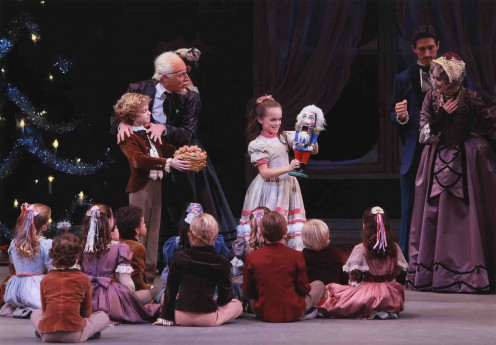
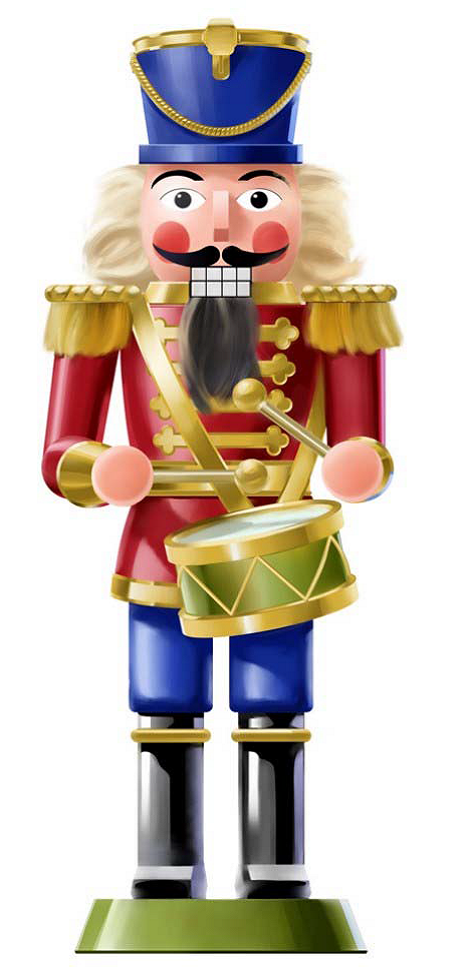
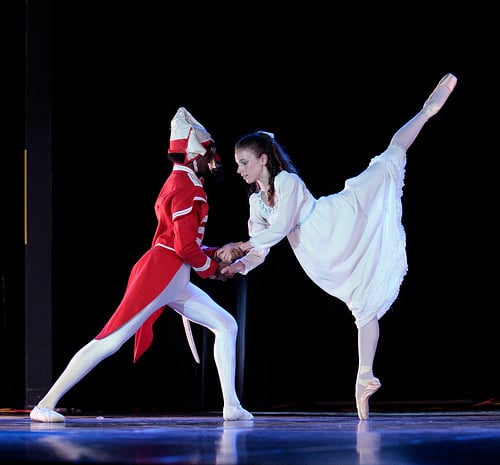
The story of "The Nutcracker Suite"
Many choreographers throughout the U.S. have revised or changed the original libretto in their performances. The story can vary from production to production. But, most of the ballets follow this basic story line.
Act I - Christmas Eve in the German family Stahlbaum home
Family and friends have gathered to decorate the Christmas tree, a German tradition, in the Stahlbaum home. The adults decorate the tree and then the children are sent for the presentation of the tree to them. The children enter the room to see the Christmas tree and the children are in awe of the beautifully decorated tree.
During the Christmas Eve festivities presents are given to the children. Then, Drosselmeyer, a magician, toy maker and young Clara Stahlbaum's godfather, appears. He has brought toys for the children. Four life-like dolls dance and entertain the children and adults. Then, Drosselmeyer puts them away for safe keeping.
But, Drosselmeyer has one more toy for Clara and Fritz. It is a wooden Nutcracker carved in the shape of a little man to break the shells of the walnuts he has also brought. Clara immediately is enchanted with the Nutcracker; however, Fritz, being the little annoying brother, purposely breaks it and Clara is heartbroken.
Later that night, after everyone has gone to bed, Clara returns to the room with the Christmas tree to check on her beloved Nutcracker.
The clock strikes midnight (always that magical hour) and the Nutcracker grows to life-size as Clara finds herself in the middle of a battle between the gingerbread soldiers, led by the Nutcracker, and the army of mice that suddenly appear and start eating the gingerbread soldiers.
The tin soldiers and dolls all join the Nutcracker's army to help. As the Mouse King advances his army, Clara throws her slipper at him, distracting him and the Nutcracker is able to stab the Mouse King.
The mice retreat and the Nutcracker is transformed into a handsome prince. He leads Clara through the moonlit night to a pine forest where the snowflakes dance around them.
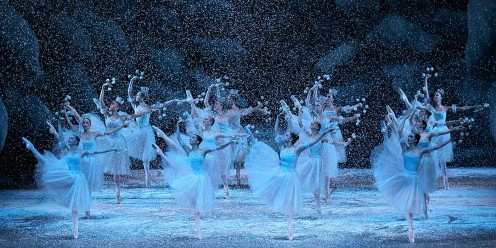
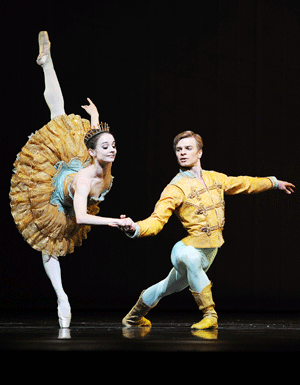
Act II - In a magical land
Clara and the Prince travel in a nutshell boat pulled by dolphins to the beautiful Land Of the Sweets. This land is ruled by the Sugar Plum Fairy since the Prince has been gone. To honor Clara, who saved the Nutcracker (the Prince), a celebration of Sweets from around the world is produced and they all dance to amuse Clara:
- Chocolate from Spain
- Coffee from Arabia
- Tea from China
- Candy Canes from Russia
The Sugar Plum fairy does her own special dance for Clara, too.
After the dances of the Sweets, Danish shepherdesses perform on their flutes. Mother Ginger has her children, the polichinelles, come out from under her large skirt to dance to entertain Clara.
Next, a string of beautiful flowers perform a waltz. The Sugar Plum fairy and her Cavalier are the last to perform and their performance is a lovely dance.
A final waltz is performed by all the sweets and then Clara and the Prince are crowned rulers of The Land of Sweets.
Clara and the Prince leave in a sleigh drawn by reindeer.
"Dance of the Sugar Plum Fairy" by Nina Kaptsova of the Bolshoi Ballet
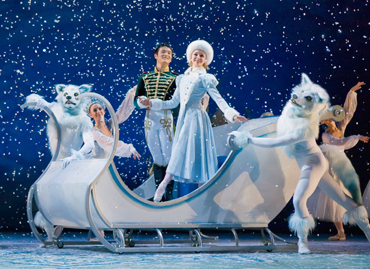
Would you like to see a performance of "The Nutcracker Suite"
Clara is found by her parents sleeping by the Christmas tree and suddenly Clara awakens thinking all has been a beautiful dream, but she notices her crown sitting beside her. Was it really all a dream?
Clara walks over to the Christmas tree, picks up the Nutcracker and goes back to sleep. If it truly was all a dream, Clara wants to keep dreaming.
This ballet has enchanted me ever since I was a young girl dancing ballet and playing the piano. Although I danced The Sugar Plum Fairy part in ballet classes, I never danced in a production of The Nutcracker Suite. Even writing this hub has gotten me excited to see the ballet again this Christmas season. Don't miss out on a wonderful Christmas tradition. Take your sweetie to see this ballet and for a few hours you can dream of being Clara and the Prince in The Land of the Sweets.
See below for links to websites to buy tickets from various ballet companies throughout the U.S. who are performing The Nutcracker Suite this Christmas season.
Ticket websites
- Home: San Francisco Ballet
- The Nutcracker Suite | Joffrey Ballet
Director, Ashley C. Wheater brings a unique, inclusive perspective on dance, proudly reflecting the diversity of America with its company, audiences, and repertoire. - Tickets for Concerts, Sports, Arts, Theater, Family, Events, more. Official Ticketmaster site
Find and buy tickets: concerts, sports, arts, theater, broadway shows, family events at Ticketmaster.com








